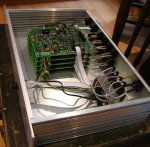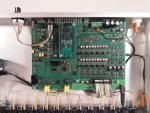Hi Friends,
C5 was created following requirements of some customers who were tired to make “by hand” fir filters that combine all functions. With high possibility to make some error and no possibility to have overall look on what is done and no possibility to easy add some new changes.
Let’s clarify some myths about latency that are created by competitors who can not control latency and therefore, are comfortable to keep it high and not defined.
The overall latency of some DSP with analog inputs and outputs is:
converter latency + driver latency + math latency + actual FIR filter latency.
Converter latency is about 1.6 ms for ordinary converters but can be as low as 0.1 ms if we need that.
Other components can be zero and must be zero.
The statement that FIR filter always has latency half of its length in ms, is absolutely incorrect.
For mentioned example where you see group delay of about 7 ms @ 100 Hz,
2.5 ms @ 300 Hz, 0.7 ms @ 1 kHz and 0 ms from 3 kHz,
But the latency is ZERO (converters excluded) !
We will have 12 (or even 9) ms latency only in case if we use time correction for mentioned group delay.
All mentioned is available only if we use LR24 as lowest order crossover, that is doing crossover well. And we can use LR24 (with its relatively wide transition bands) only in case if we have correction in each particular band/way.
I would like to point on possibility to use two mono blocks of DSP for each side of stage/FOH – much less cables …
And that is available by stacking two APL1 PCBs for 4 way system right now.
The stacking of 4 PCBs is creating 4 way stereo DSP.

Mentioned competitor product can process 2604 coefficients for all FIRs and 650 for one.
It is too much low number to create valuable crossover with corrections.
It incorporates down sampling for lower bands. But there is no warnings about latency required (introduced) by that. But it is huge!
And management is on DOS based system : )))
It is too far for serious competition …
















